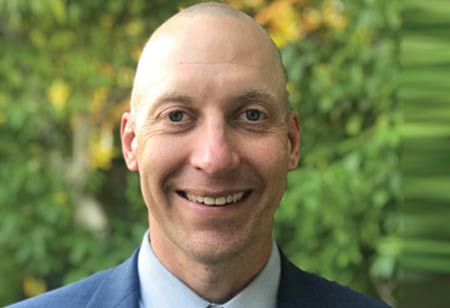Thank you for Subscribing to Healthcare Business Review Weekly Brief

Improving Efficiency In Orthopedic Care
Healthcare Business Review
I’ve been in leadership roles in a variety of settings for more than twenty years. I’ve been an owner and partner in a private practice, a co-founder in another and served in corporate, community practice and academic healthcare systems. Efficiency and the bottom line were the only name of the game for years in a pre-pandemic healthcare environment. In the post-pandemic landscape, the added degree of difficulty comes in blending efficient, lean-based practices with a supportive, compassionate culture that emphasizes the team’s work-life balance and overall well-being. Evolving with the changing needs of the workforce is critical to our department’s long-term success. Leading an orthopedic practice comes with unique challenges, particularly in an era where efficiency, resourcefulness and data collection are paramount, while also trying to foster a supportive, compassionate culture for physicians and staff. Leaders need to address these twin elements, creating workflows and structures to streamline services and increase patient volume and throughput to optimize resource use. At the same time, they are charged with ensuring the highest levels of quality in care and service delivery.
The first hurdle to tackle is data collection. An orthopedic practice has hundreds of data points that can be instrumental in improving the quality of care. Yet, gathering this data with minimal disruption to clinical workflow is a considerable task. The proper use of electronic health records (EHRs) and decision support systems, the move toward predictive analytics and AI, and digital patient interaction can make this activity easier and more efficient. The task for the leadership is to embrace these technologies with careful planning and training since the use of new systems could initially feel overwhelming to the care team. Clinically relevant data, including patient demographics, diagnoses, and treatment plans to outcomes, helps identify patterns, predict trends, and formulate evidence-based strategies to enhance patient care. Data analytics can provide insights into surgical outcomes, the efficacy of various treatments, patient satisfaction, and overall quality of care, aiding physicians and care teams in making informed, data-driven decisions. Tailored treatment protocols and personalized patient care can be devised based on comprehensive data analysis, ultimately improving patient outcomes and clinic efficiency. Thus, data collection and analysis are strategically important, fostering a more informed, efficient, and result-oriented orthopedic practice.
A difficulty faced by orthopedic groups, healthcare systems, and organizations in all types of industries is the efficient use of resources. Balancing block time with clinic time, turnovers with throughput, and other dueling demands on time and resources is exceedingly complicated. Actions geared towards efficiency, such as streamlining clinical and administrative workflows, implementing lean practices, and maximizing workforce utilization, often come with a tremendous load on employees. Although these strategies help manage patient loads and minimize waste, they often focus on output rather than the individuals producing it, potentially creating an environment where the well-being of the staff could be overlooked. Striving to provide services to more patients with limited resources necessitates changes at the most fundamental levels - restructuring schedules, optimizing the use of each professional’s skill set and making the most of the available technology.
Achieving this necessitates a leader with excellent strategizing abilities and an extensive understanding of the practice’s logistics. Constant monitoring and evaluation of the efficiency of these changes are also essential to ensure the smooth running of operations.
This increasing burden on the orthopedic team is another critical obstacle. As the healthcare setting demands more from its professionals, stress and burnout become real threats. Leaders need to adopt a balancing act - driving teams to function optimally while ensuring they are not overworked or overwhelmed. This requires developing wellness programs, offering professional development opportunities, and ensuring a fair work-life balance for the team.
The biggest challenge may be acknowledging the increasing demands on the team and building a supportive culture, ensuring that the care given to patients is mirrored in the treatment of each team member. Prioritizing culture, wellness, and engagement can require investments of time and resources that organizations may feel they cannot spare. Activities such as wellness programs, team-building exercises, and professional development opportunities can burden already strained resources. Moreover, leaders may struggle to prioritize these engagements when faced with arduous daily tasks and constant pressure to serve more patients, worsening the situation. A human-oriented approach may seem at odds with the drive for efficiency and resourcefulness, but the two are not mutually exclusive. It is in this intersection where a respect-driven, empathetic ethos and a results-driven, efficient practice do not conflict but instead, can complement each other. The fusion of kindness and compassion with efficiency can unleash a positive cycle in which satisfied, well-cared-for staff are more likely to be productive and provide better patient care, a better patient experience, and compassion toward one another.
"Data analytics can provide insights into surgical outcomes, the efficacy of various treatments, patient satisfaction, and overall quality of care, aiding physicians and care teams in making informed, data-driven decisions"
Creating such a culture requires transparent, communicative, empathetic leadership, which regularly encourages feedback and creates an environment where all team members feel heard and valued. Another strategy could be the integration of team-building activities and regular communication, which allows for increased understanding and empathy among team members. Regular training and workshops emphasizing the importance of empathy, collaboration, and shared experiences can play a significant role in culture building.
The challenges an orthopedic practice faces are undoubtedly daunting, particularly when tasked with improving efficiency and nurturing a supportive culture. However, ample strategies can be employed to create this balance - from re-engineering workflows to encouraging honest, open dialogue within the team. While such a feat may prove difficult, a holistic approach is key to maintaining a high standard of patient care while taking care of each other. This balance between high efficiency and compassion is not just a leadership responsibility but the cornerstone of sustainable, quality healthcare.









